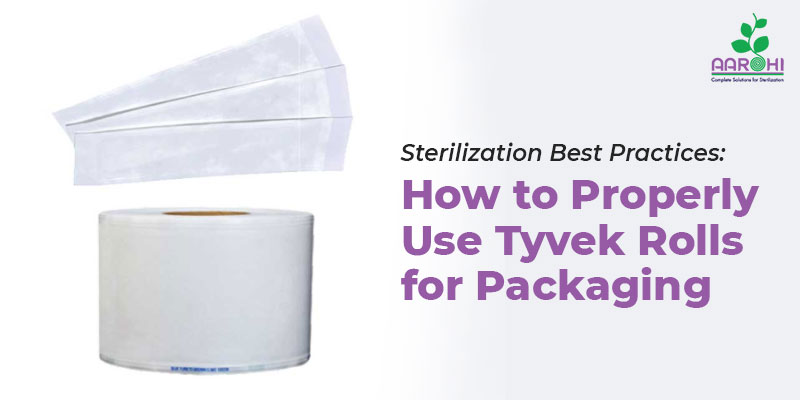Sterilization pouches are disposable packaging used to sterilize medical equipment. Well-designed and properly used sterilization pouches provide effective sterilization, safe handling, and storage for the equipment. Usually, dental professionals, tattoo artists, nail technicians, beauticians, etc., use sterilization pouches. In addition to protecting things through this process, it also facilitates the proper presentation of sterile equipment in the operating room and protective tools. The sterilization pouches used in hospitals are also considered important pieces of medical equipment.
What are the common types of sterilization pouches?
You can get three common types of sterilization pouches on the market. They are given by
- Self-sealing pouches have an opening with an adhesive tab at one end. The product is placed into the pouch before the open end is sealed with adhesive strips.
- The heat-sealed pouch has an opening at one end. The product is placed into the pouch before the open end is sealed using a heat sealer.
- The roll or tube pouches can be cut to the desired length and opened on both sides. The technician will heat seal one end, put things in the bag then heat seal the other end.
How will the sterilization pouches be made?
- Paper/ CPP – These pouches are for steam sterilization or ethylene oxide (EO) sterilization.
- Tyvek/PP – These pouches are intended for use in Vaporized Hydrogen Peroxide (VHP) and EO Sterilization.
The sterilization pouches are made of two main parts: medical grade paper or Tyvek and a transparent Cast Polypropylene (CPP) that is held together by heat seal or with glue. These materials are specifically designed to allow penetration of chemicals, heat, vapors, or steam. It is important to remember that paper pouches are used in steam, and Tyvek is used for hydrogen peroxide (VH2O2) steam sterilization. But when using the pouch in the wrong sterilization procedure, failure can also occur. Paper placed in VH2O2 absorbs sterile vapors. This can also prevent the disinfectant from reaching the device. VH2O2 absorbent paper can damage the tool and may catch fire.
How will you use sterilization pouches?
Choose the correct pouch for your sterilization method: You can consider the high or low temperature while choosing the pouches. Verify that the material of the sterilization pouch is compatible with the medical device to be packaged.
Confirm that the bag has been inspected: The pouch and equipment you are disinfecting must not only be compatible but also inspected for the sterilization process. Check the sterilization pouch instructions for use (IFU) or confirm the check with the manufacturer.
Packaging equipment according to IFU: You can place the sterilization pouch in the sterilizer. The bag can be placed flat on the shelf or the vertical edge facing the same direction: swap paper or Tyvek for plastic.
How will you choose suitable sterilization pouches?
Some of the Considerations when choosing sterilization pouches are given.
- Consider the appropriate bag size and use to allow adequate air removal, disinfection, and drying.
- Maintain 1 area around items that are sealed from all sides of the bag.
- Fill the bag up to 75% of the package volume to allow the disinfectant to penetrate the bag and for the bag to comply with the air evacuation process during sterilization.
- Refer to the manufacturer's instructions for use for proper size and use of the sterilization bag.
What are the proper sterilization packaging practices?
The sterilization pouch is used for lightweight medical instruments or equipment. The pouch should be of the right size and strength to support the packaged goods. For example, using paper/plastic bags for heavy metal tools may result in problems in handling. Maintain sterility due to events such as insufficient drying or tearing during storage or handling.
How will you validate the sterilization pouches?
The sterilization pouches are Class II medical devices designed to allow sterilization to penetrate pouches and keep the equipment sterile inside the pouch after sterilization. In order to verify that the pouch meets these requirements, pouches are subjected to rigorous testing to verify their performance.
One of the most important and rigorous tests performed during the audit is the half-cycle sterilization test. This test is used to simulate medical devices under the harshest conditions and confirm the effectiveness of microorganisms. This test requires that highly resistant bacteria spores be placed in challenging disinfection locations, such as within a lumen. The device is then packaged and sterilized in a programmed cycle in half the time exposure of the surrounding. All live bacterial spores must be eliminated at the end of the half cycle for the test to be successful.
Can You Opt For a Double Insertion Policy?
The operator places the tool in the sterilization pouch. While there is no AAMI or AORN practice that states that you have to peel an item in the bag twice to use it in the operating room (OR), some ORs do ask that some items be placed in the double pockets to aid in presentation. Examples include small objects or tools that may present challenges during a sterile presentation. When the manufacturer checks the bag for double insertion, it is also essential to read the instructions for using the bag. Make sure to follow your establishment's policies and procedures when deciding whether to add a pair of bags.
Tips for double wrapping:
- Inner and outer pouches should be film-to-film by facing the same side
- Do not fold the envelope inside.
Bottom Line:
The sterilization pouch is disposable packaging used in sterilizers to allow the passage of the sterilizer to items placed inside. After sterilization, these Class II medical devices will maintain the sterile condition of the processed equipment. If you are looking for top-quality sterilization pouches, sterilization rolls, and sterilization reels, get in touch with Aarohi Sterilant today!




